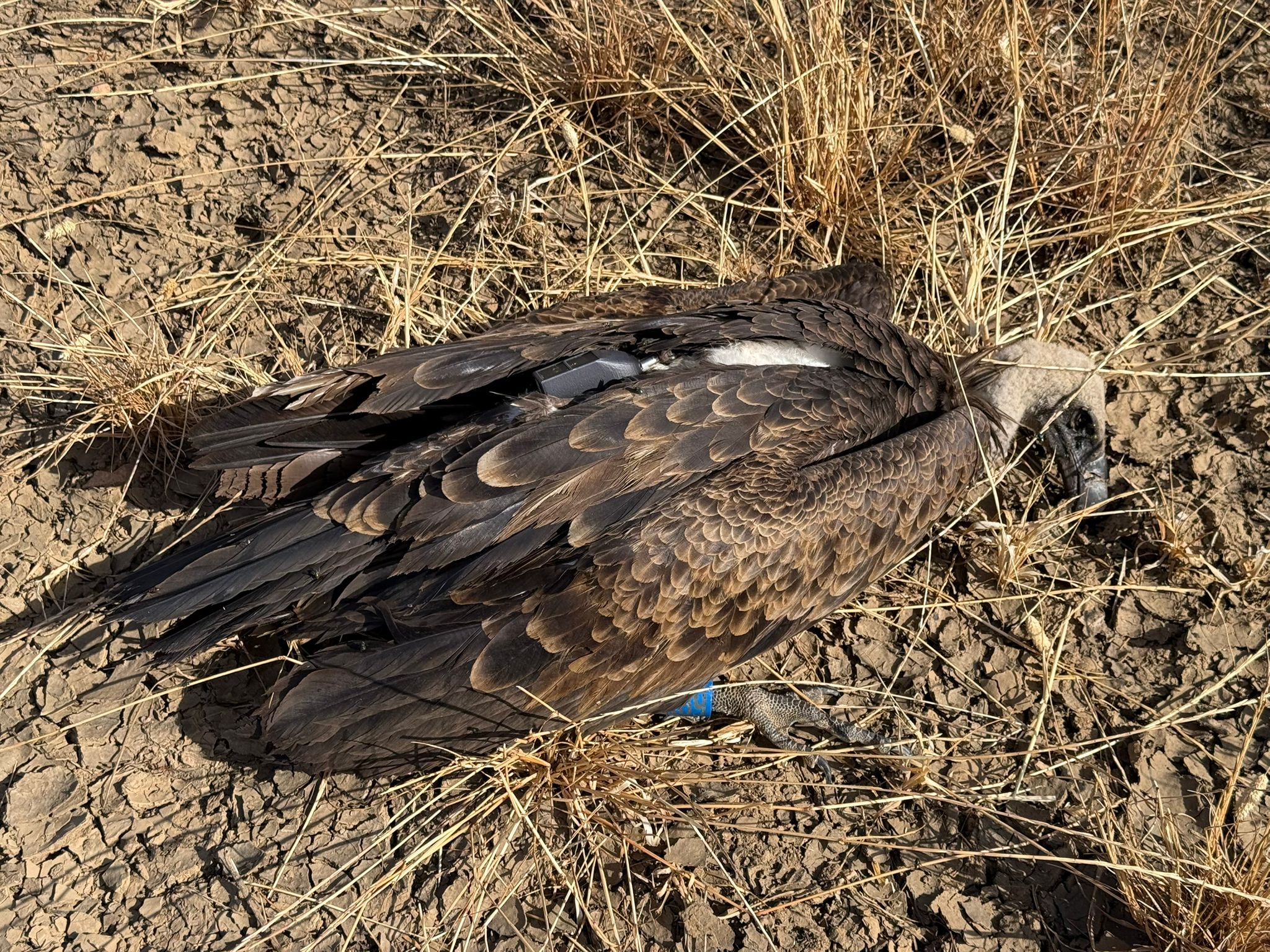
Yet another Cinereous Vulture collided with a wind turbine in the Greek Rhodopes within a Natura 2000 area, causing a high alert. Worryingly, the death of the Cinereous Vulture named ‘Ektoras’ is not an isolated event – many birds and bats, including endangered species, faced a similar fate in the region. These recent incidents highlight the issue of the ineffectiveness of automated bird collision avoidance systems installed in wind farms where birds pass through with great frequency.
Cinereous Vultures fatal collision
On 21 May 2022, cameras of the wind farm’s collision avoidance system and the GPS transmitter on the Cinereous Vulture notified officials of the incident. After the vulture collided with the wind turbine’s blade, its right wing was severed from its body. The next day, employees of the wind farm retrieved the mutilated bird and handed it over to the Forestry Service, which in turn informed the Natural Environment and Climate Change Agency to start taking the necessary steps and uncover exactly what happened.

Monitoring the threatened Cinereous Vulture population in Thrace
The Cinereous Vulture that lost its life was a fifth-year-old in its first year of adulthood. Conservationists anticipated that Ektoras would start breeding in the coming years, contributing to the conservation of the population of this endangered species in Thrace.
Several monitoring actions in the region provide a glimpse into the life of Cinereous Vultures like Ektoras. In 2018, experts tagged Ektoras as a chick with unique identification rings. A few years later, in October 2021, specialized staff of the former Management Body of Dadia – Lefkimi – Soufli Forest National Park equipped the vulture with a GPS transmitter, provided by us at the Vulture Conservation Foundation (VCF) within the LIFE RE-Vultures project. These monitoring actions are important to help track the movements of individuals, identify the main areas they use for feeding and roosting, and mitigate the causes of their mortality. Between 2016 and 2021, a total of 40 GPS transmitters were deployed to Cinereous Vultures in the region under the programmes: ΕΠΠΕΡΑΑ (ΈΣΠΑ 2007-2013), ΥΜΕΠΕΡΑΑ (ΕΣΠΑ 2014-2020) and LIFE14 NAT/NL/000901.
Wind farms kills many birds and bats in Thrace
During the first systematic survey of dead birds at established wind farms in the region between 2008-2010, WWF Greece detected four Griffon Vultures, one Cinereous Vulture, two Short-toed snake eagle, one Booted eagle, three kestrels, two Eurasian sparrowhawks, one Western marsh harrier, 84 other birds and 194 bats. In addition to the above study period, one alive but mutilated Griffon Vulture, three dead Griffon Vultures, three dead Cinereous Vultures, one dead Lesser spotted eagle and one dead White-tailed eagle have been found. Just a few days after the Cinereous Vulture incident, on 8 June 2022, an injured European honey buzzard was found under a wind turbine, also equipped with a collision avoidance system, which sadly died the following day. The exact circumstances of its injury are under investigation.
Growing wind farm developments threaten biodiversity
Although renewable energy from wind farms is one of the solutions to reduce fossil fuel use and thus the consequences of climate change, it can cause adverse impacts on biodiversity. When such developments are poorly planned, they can be deadly to vultures, birds and bats, especially if wind farms are constructed without proper environmental impact studies and are located either near breeding colonies, roosts or migratory pathways. In Spain alone, where approximately 90-95% of the entire European vulture population is present, nearly 10,000 vultures died due to wind turbine collisions according to data collected over the past 20 years.
Today, in Thrace, 167 installed wind turbines are located within Natura 2000 sites and another 101 at peripheral sites (256 of which are located within Important Bird Areas). At the same time, the number of wind farms in the process of being approved in the area is almost six times the number of installed wind farms, directly threatening even the viability of the populations of some species. As we can also see from the recent incident, automated collision avoidance systems in important bird areas are not always enough to prevent collisions. It is imperative to assess the cumulative impact of all wind farms, both licensed and under licence, on protected species and habitats and to establish exclusion zones for the installation of new wind farms. To safeguard biodiversity, conservationists should work alongside the energy sector to find solutions and prevent such accidents.
The VCF and partners have been engaging with a number of researchers and also with energy operators to provide data about the occurrence of vulture species, to try to prevent the establishment of wind farms in important corridors or breeding areas. The organization is also involved in multiple projects funded by the EU’s LIFE Programme and MAVA Foundation that work to minimize the threat of collision to vultures.
Source: NECCA



